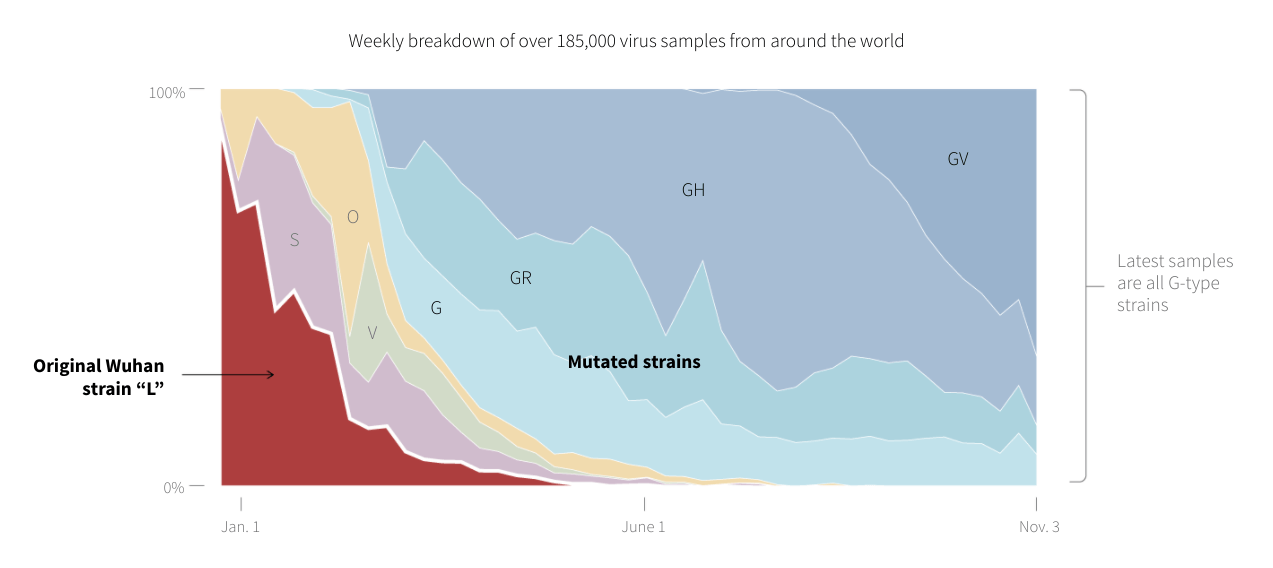Reuters analysed over 185,000 genome samples from the Global Initiative on Sharing All influenza Data (GISAID), the largest database of novel coronavirus genome sequences in the world, to show how the global dominance of major strains has shifted over time.
The analysis shows there are currently seven main strains of the virus. The original strain, detected in the Chinese city of Wuhan in December 2019, is the L strain. The virus then mutated into the S strain at the beginning of 2020. That was followed by V and G strains. Strain G mutated yet further into strains GR, GH and GV.
…
The graphic [below] shows how the original L strain is almost gone, leaving G strains dominant in the current stage of the pandemic. That’s important because the G strains include one mutation that makes it easier for the spike proteins on SARS-CoV-2 to bind to receptors on human cells, potentially increasing the chances of infection and transmissibility of the virus.
Small mutations in the virus’s genome are normal as it is copied over and over. The GISAID database identified thousands of changes along the genome. Many are harmless but it’s virtually impossible for scientists to predict when and how a mutation can result in a strain of a virus that is more transmissible or impervious to proposed vaccines.
































